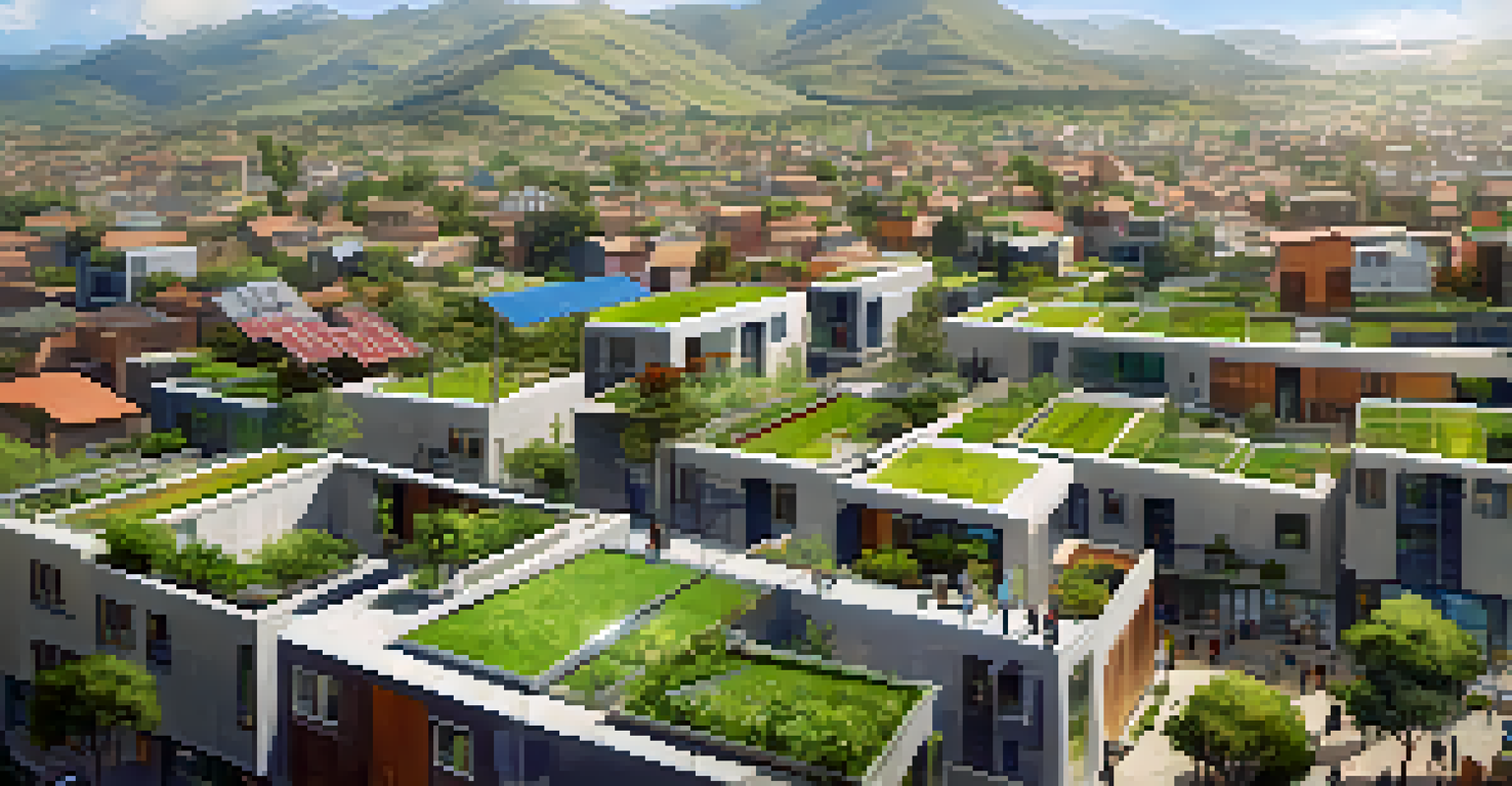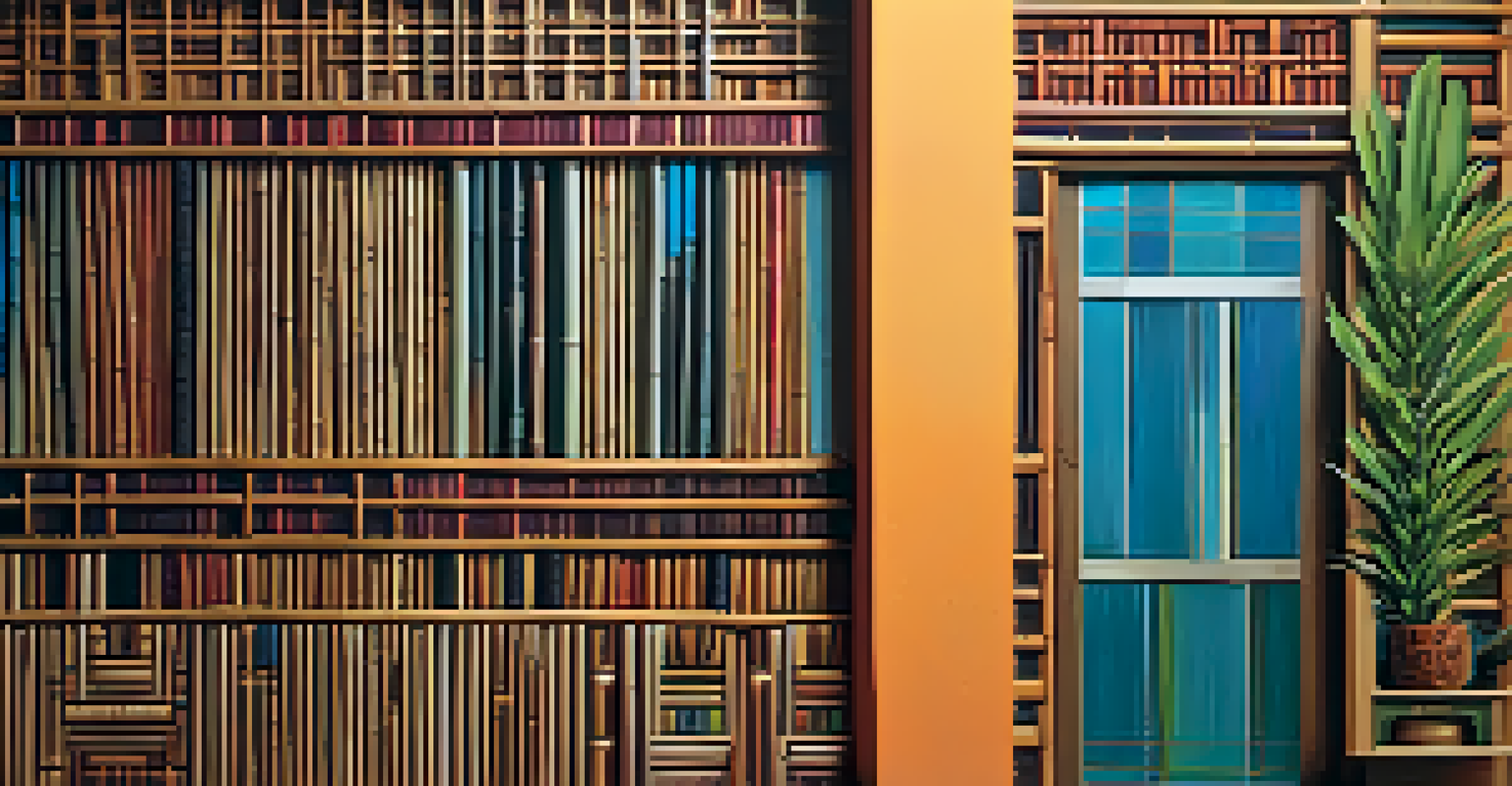Contemporary Architecture: Modern Designs in Urban Peru

The Evolution of Architecture in Peru's Urban Landscape
Peru's architectural journey reflects a rich tapestry of history and innovation. From ancient Incan structures to colonial influences, the evolution has been significant. Today, contemporary architecture is emerging as a powerful expression of identity and functionality in urban settings.
Architecture should speak of its time and place, but yearn for timelessness.
Modern designs are not just about aesthetics; they integrate cultural elements that resonate with local communities. This evolution is a response to both global architectural trends and local needs, creating a unique blend that characterizes contemporary urban Peru. Architects are increasingly focusing on sustainability and environmental consciousness.
With urbanization on the rise, the architecture in cities like Lima showcases a dynamic interplay between tradition and modernity. These developments are crucial for fostering a sense of place and belonging, as they serve not only as living spaces but also as cultural landmarks.
Key Elements of Modern Peruvian Architectural Design
Contemporary architecture in Peru often emphasizes clean lines, open spaces, and an integration with nature. Architects are utilizing materials such as glass, steel, and concrete to create structures that are both functional and visually striking. This approach allows for natural light and ventilation, enhancing the living experience.

Additionally, modern designs frequently incorporate local materials and craftsmanship, paying homage to Peru's rich heritage. For instance, the use of adobe and bamboo not only reflects traditional building methods but also supports sustainability. This blend of old and new creates a dialogue between the past and present.
Sustainability in Peruvian Architecture
Contemporary architecture in Peru prioritizes sustainability, incorporating eco-friendly designs that reduce environmental impact.
Color and texture also play a vital role in modern Peruvian architecture. Bright colors and innovative textures reflect the vibrant culture and natural landscape, making each building a unique expression of its environment. This creativity contributes to the overall identity of urban spaces.
Sustainable Practices in Urban Architecture
As urban areas expand, sustainability has become a central focus in contemporary Peruvian architecture. Architects are increasingly designing buildings that reduce energy consumption and minimize environmental impact. This includes the use of renewable energy sources and eco-friendly materials.
Sustainability is about ecology, economy, and equity.
Green roofs, solar panels, and rainwater harvesting systems are becoming common features in new constructions. These practices not only contribute to environmental preservation but also offer economic benefits to homeowners through reduced utility costs. The emphasis on sustainability is reshaping how urban spaces are planned and developed.
Moreover, community involvement is crucial in these sustainable practices. Architects are engaging local residents in the design process, ensuring that developments meet the needs of the community while promoting environmental stewardship. This collaborative approach fosters a sense of ownership and pride among residents.
Iconic Examples of Contemporary Architecture in Peru
Lima boasts a variety of iconic buildings that showcase contemporary architectural innovation. One standout is the 'Museum of Memory and Human Rights,' which serves as a poignant reminder of Peru's past while embodying modern design principles. Its striking facade and thoughtful layout invite reflection and engagement.
Another notable example is the 'Hotel B,' located in the Barranco district. This boutique hotel merges modern luxury with historical charm, featuring a beautifully restored mansion that highlights local artistry. Such projects illustrate how contemporary architecture can enhance urban spaces while respecting their historical context.
Blending Tradition with Modern Design
Modern Peruvian architecture seeks to balance innovation with cultural heritage, integrating local materials and traditional elements.
These examples are just the tip of the iceberg. As more architects and designers take inspiration from their surroundings, we can expect a continued evolution of urban architecture in Peru, one that is both innovative and deeply connected to its cultural roots.
The Role of Technology in Modern Architectural Design
Technology is revolutionizing the way architects design and construct buildings in Peru. Advanced software allows for intricate designs and simulations that make the planning process more efficient. This technological integration leads to higher precision and creativity in architectural projects.
Moreover, the use of Building Information Modeling (BIM) is becoming increasingly common. BIM enables architects to visualize a project in three dimensions before construction begins, facilitating better collaboration among stakeholders. This approach reduces costs and timelines while enhancing the overall quality of the final product.
In addition to design, technology is also influencing the construction phase. Prefabrication techniques, for instance, allow for faster assembly and reduced waste. As technology continues to evolve, it will undoubtedly shape the future of contemporary architecture in Peru.
Balancing Tradition and Modernity in Urban Peru
In urban Peru, there exists a fascinating tension between tradition and modernity. While contemporary architecture seeks to innovate, it is essential to respect and preserve the rich cultural heritage that defines Peruvian identity. This balancing act is crucial in ensuring that modern designs resonate with local communities.
Architects are increasingly looking to incorporate traditional elements into their modern projects. This may include using local materials, traditional building methods, or cultural motifs that reflect the area's history. Such integrations create a sense of continuity, linking the past with the present.
Technology's Impact on Design
Advancements in technology, such as Building Information Modeling and prefabrication, are revolutionizing architectural practices in Peru.
Ultimately, this balance enriches the urban landscape, creating spaces that are not only functional but also meaningful. It encourages dialogue about identity and belonging, fostering a deeper connection between residents and their environment.
The Future of Urban Architecture in Peru
Looking ahead, the future of urban architecture in Peru is poised for exciting developments. With increasing urbanization, there is a growing demand for innovative solutions that address housing, sustainability, and community needs. Architects are expected to lead the charge in creating spaces that are both livable and environmentally friendly.
Additionally, the integration of smart technology into urban planning is on the rise. This includes smart homes and buildings that optimize energy use and enhance residents' quality of life. As technology continues to advance, it will play a significant role in shaping the architectural landscape of Peru.

Ultimately, the future of contemporary architecture in urban Peru will be defined by its ability to adapt and respond to the evolving needs of society. By prioritizing sustainability, community engagement, and innovation, urban architects can create spaces that not only meet today's demands but also inspire future generations.